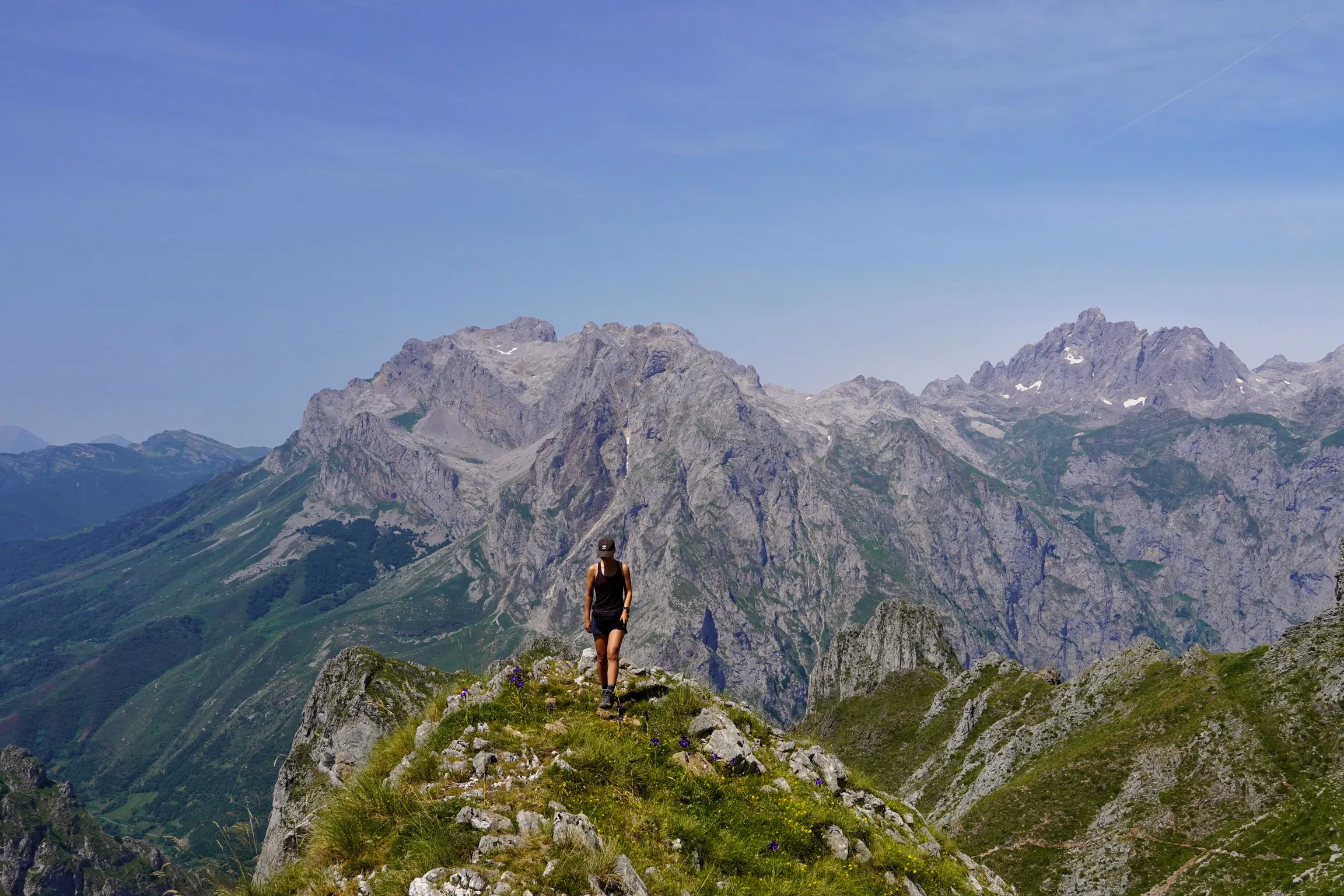Interactive hiking guide
Anillo de Picos de Europa
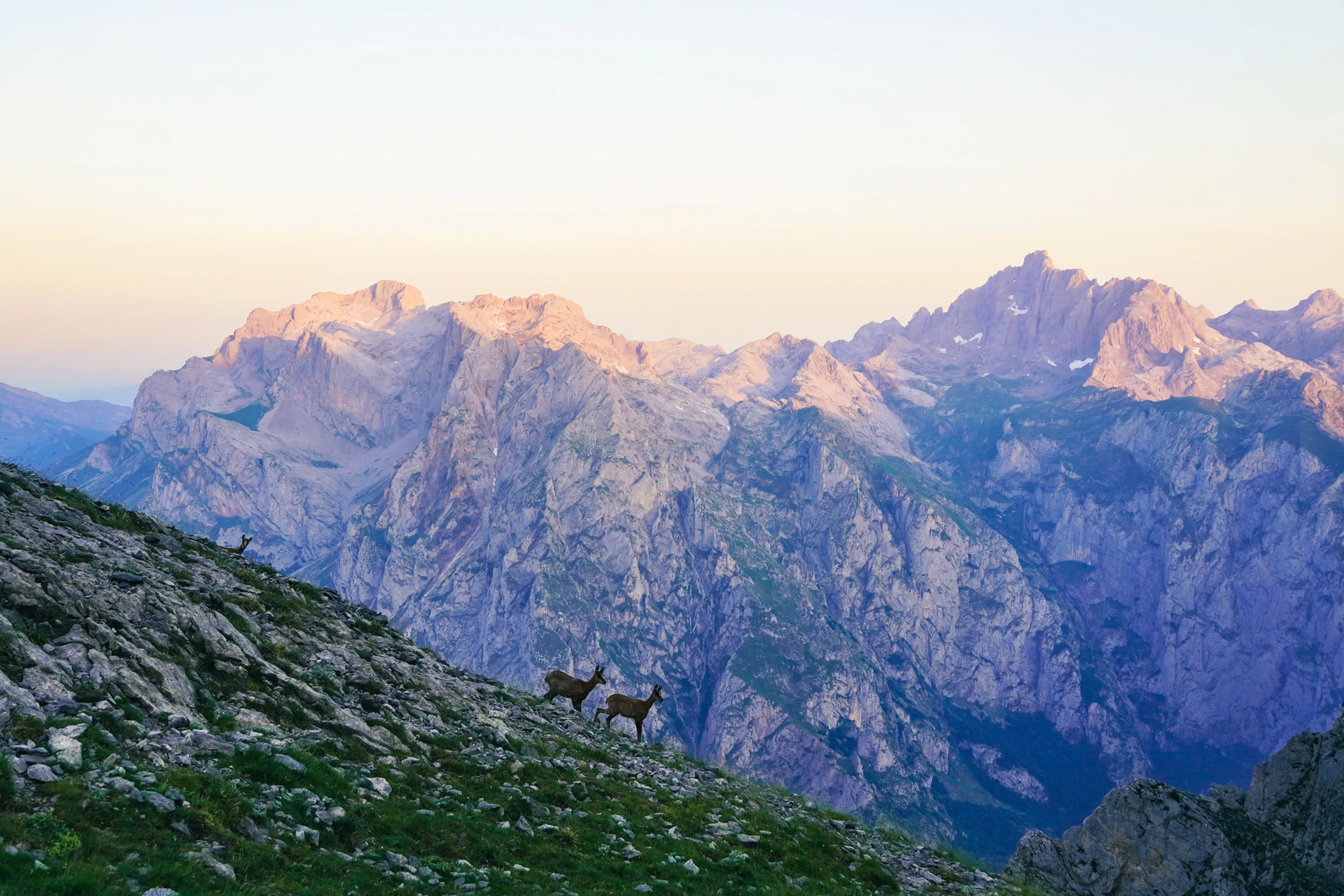
This 117km loop in Picos de Europa crosses through three regions: Asturias, Castilla y León and Cantabria. The hike shows the beauty of Northern Spain, with its lush greenery and rocky peaks.
There's no official start for the hike - you could start from various points. For us it was most convenient to start from Poncebos. Since it's a loop hike you could do it clockwise or anti-clockwise. It seems more common to do it anti-clockwise, and that's what we did as well. I wouldn't recommend doing it clockwise if you're not comfortable with climbing. There were sections that I would not be able to do in reverse: climbing down non-aided rocky sections to be exact.
We decided to camp for most of the nights, however it's possible to complete the whole hike using only the mountain huts. The waymarking on this route is not for beginners. You should be used to spotting the paths and reading the signs on the terrain.
The hike feels pretty isolated and wild. You'll see a lot of chamois (a goat-like antelope) on various occasions. You'll go through two villages and even when you're up in the mountains, you won't see towns or urbanisation in the horizon, which adds to the feeling of isolation.
A circular route crossing the three big massifs of the Picos de Europa park
- LocationSpain
- Hard
- Distance117km
- Stages9 days
- Elevation Gain 8600m
- Elevation Loss 8600m

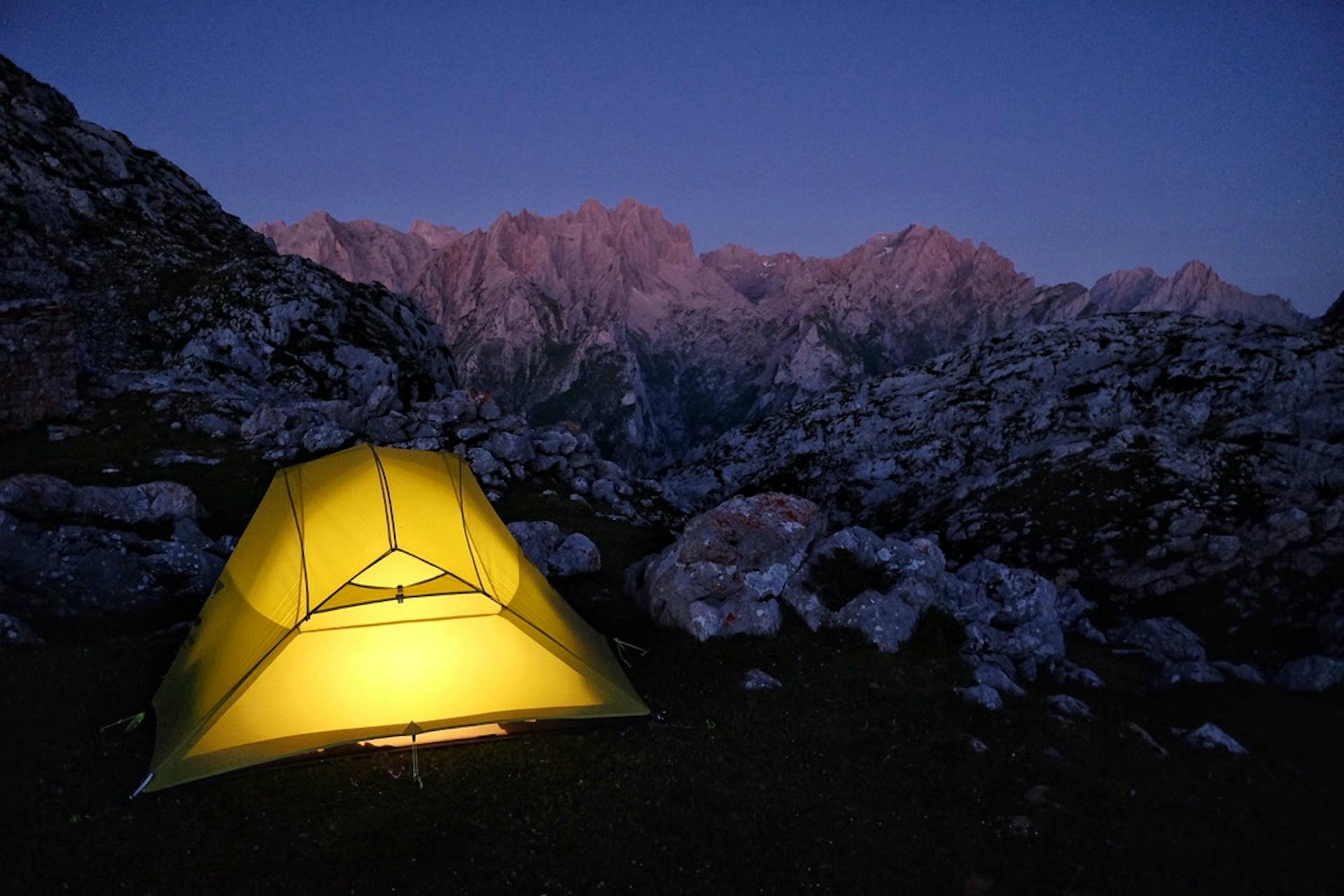

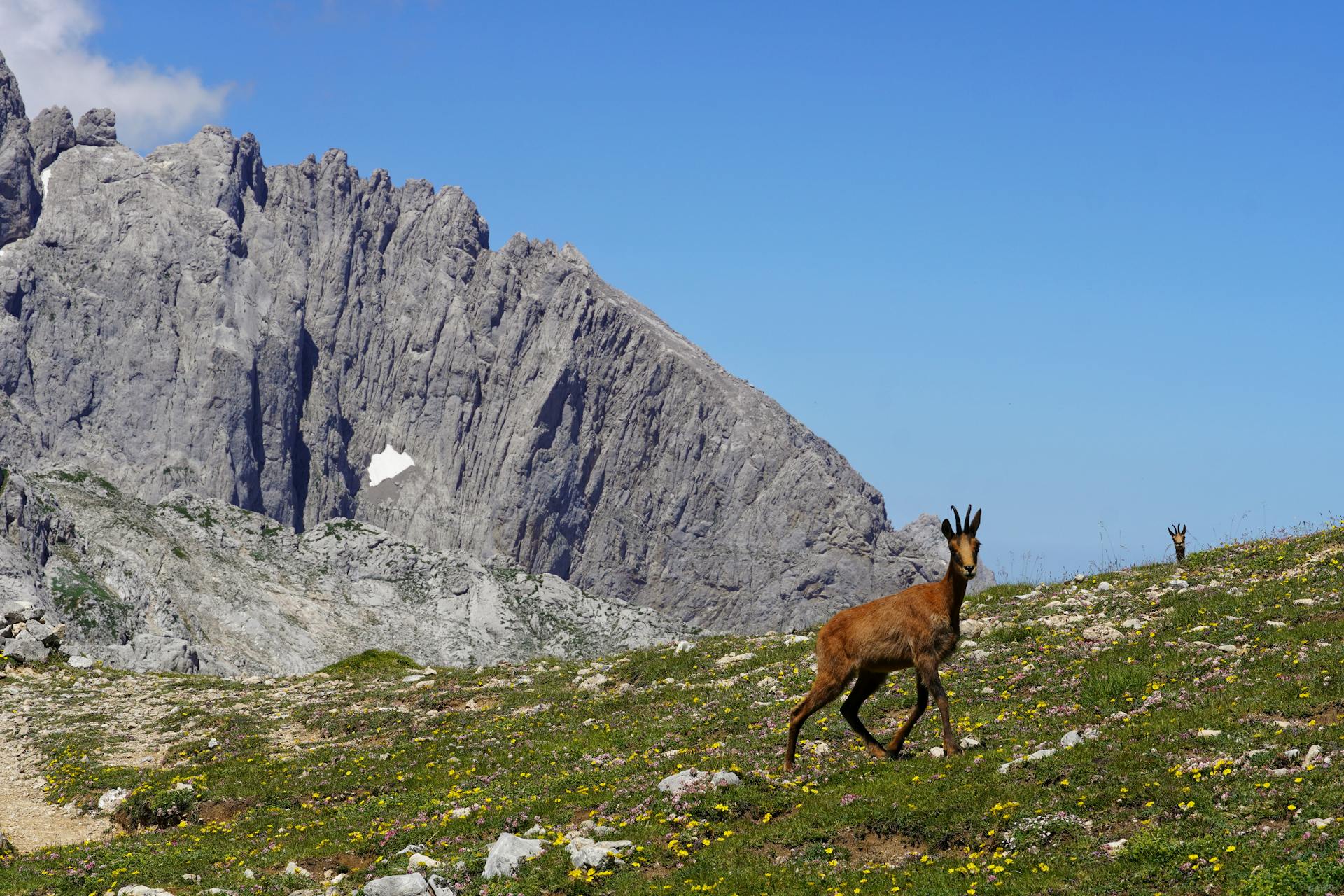
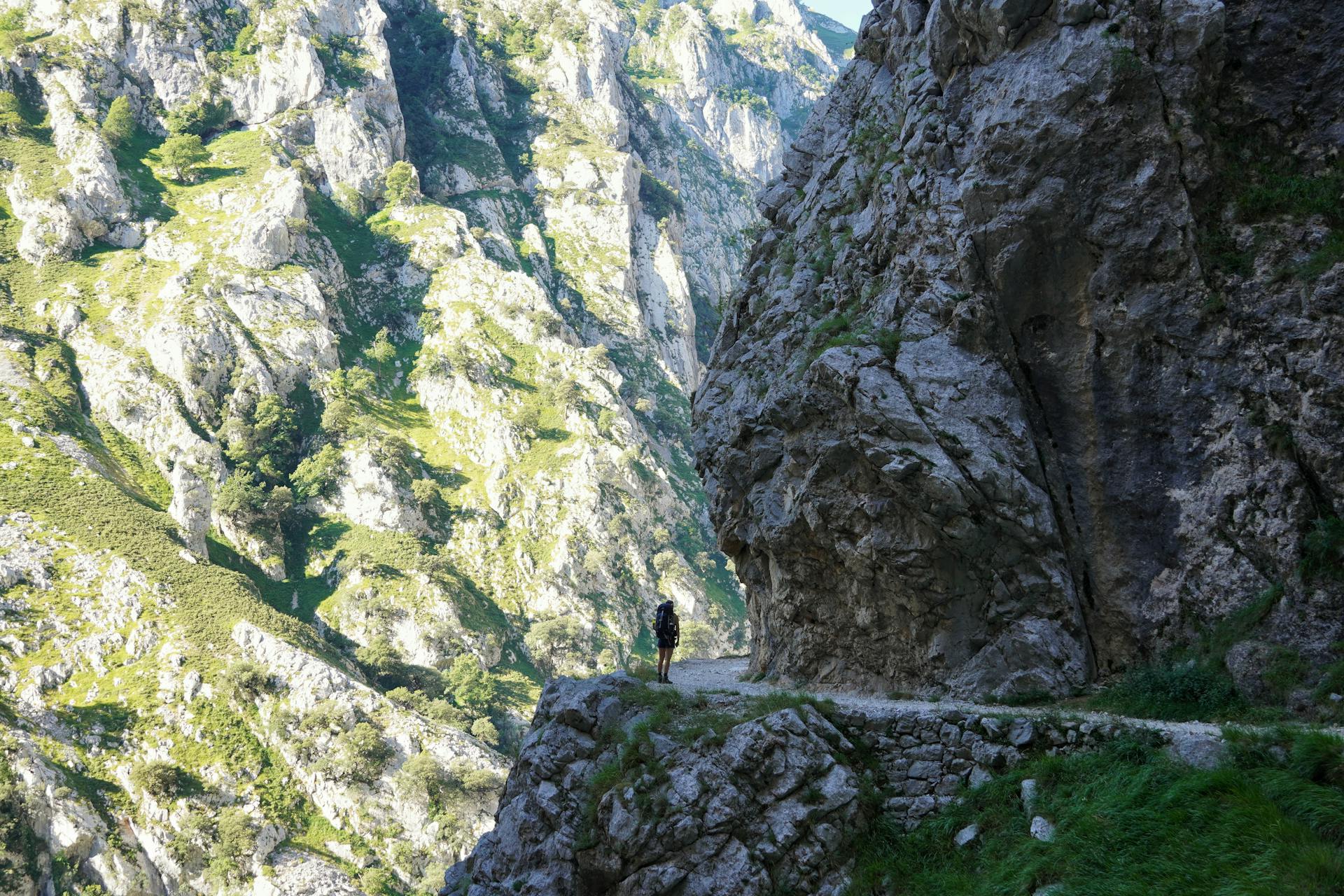

The Elevation Profile
Total Distance
-km
Elevation Gain
m
Elevation Loss
m
Max Elevation
m
Min Elevation
m
- Stage
- Point of interest
The route map
Get early access to our
Hike Planner tool
Plan every stage of your hike with official routes, variants, and real-world trail data, all in one place.
- Curated hike data with official routes, variants, and more
- Design your hike stage by stage
- Download GPX files for your favorite navigation app
- Generate a printable PDF for your hike

The hike combines the lush greenery of Asturias and the rocky mountains of "the Peaks of Europe."
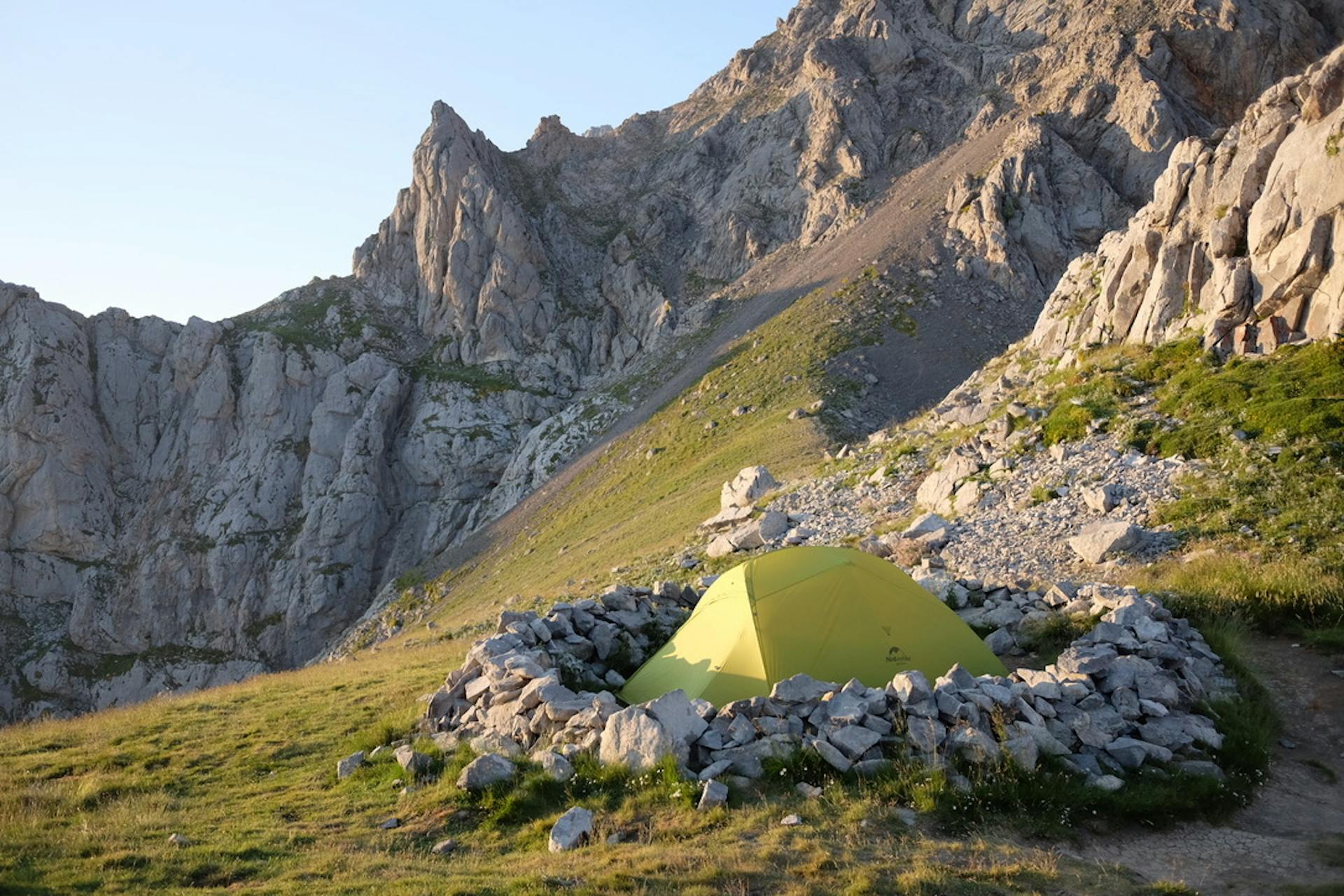





Frequently asked questions
How to get there
It could be tricky to explore Northern Spain without a car. We had a rental car and that gave us a lot of freedom. For our own convenience we started the hike from Poncebos. There were good options to park the car for free for several days and a cheap hostel to sleep before hitting the trail. Other starting points would be Sotres, Lagos de Covadonga, Posada de Valdéon and Fuente Dé. We drove all the way from Barcelona but you could also fly to Bilbao and rent a car there. For example, from Bilbao it's over two hours of driving to Poncebos.
Water & food
Water is a real concern in the whole Picos de Europa park. Water sources on the high mountains are drying up. For example in Refugio Vega de Ario they have a fountain outside but by the late afternoon the water flow reduced to droplets. However, in the morning the flow was stronger again. That being said, you shouldn't trust the natural water sources, but luckily there are many refugios along the way and they would have bottled water for purchase.
In Posada de Valdéon and Sotres you can find a minimarket to get some emergency snacks. Since we camped for most of the nights we carried all of our dry food with us. If you sleep at the refugios, dinner and breakfast are included and usually they can prepare a lunch to take away. So you can survive with a lighter backpack if you eat at the refugios.
Accommodation
The hike is designed in a way that you could sleep all the nights in a refugio. Hotel accommodation can be found in Posada de Valdéon, Sotres, Bulnes and Fuente Dé (mind you, you need to use the cable car to go down there). You can make reservations for the refugios through this link.
Wild camping
We wanted to camp most of the nights and it was relatively easy as long as you respected a few rules: an overnight camp above 1600 meters of elevation, and you pitch the tent one hour before sunset and take it down one hour after sunrise.
When to go
The best time to go is the summer season: from June to September. Some of the refugios are open from April to the end of October, so shoulder seasons are also possible. The mountains get snow and there were still snowy sections in July, for example between Refugio Collado Jermoso and Cabaña Veronica. We completed the hike in late July.
Money
You should carry cash for payments. Even though some refugios accept cards, it's not guaranteed that there's service. Even in Posada de Valdéon town we had a problem with paying with a card because there was no service, and ended up losing most of our cash there. So take more cash than you think you need! There are no ATMs along the route.
Expert hiking itineraries & personalized trip planning services
We offer crafted hiking itineraries in PDF format with all the information for your trip, GPS files for each individual stage, and the complete route, plus marked points of interest to help you navigate.
